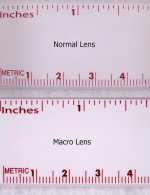Vignetting, just like discussions regarding sharpness, is generally overemphasized. I've always felt these quantitative things are so prominently discussed, simply because they are quantitative. It's very easy to see and measure the value a lens vignettes and graph it as a function of f-stop, but try to do that with a more qualitative characteristic like rendering or what mood the lens might add to your shots and the discussion breaks down quickly.
Certainly, to have a lens that vignettes heavily, so as to look like a circular fisheye, isnt generally desired, but to have a lens that vingettes a stop or two in the corners, like one would expect from a fast prime or fast wide angle, isnt a big deal, nor even "a deal", imo. Of course there are always limits and exceptions to generalities.
For the majority of my shots, some vignette is added in post, either done locally with a brush or globally with the vignette tool.
Had it been an option in the poll, I'd have voted something like;
"I usually dont mind vignetting / I usually add some vignetting in post"
having said all of this, it is my opinion that vignetting, just like any other effect or style applied to an image should be used with some restraint and shouldnt immediately be obvious unless that is the intention. Rather, it should work harmoniously (or at least attempt to) with the image when taken as a whole and singular object.













